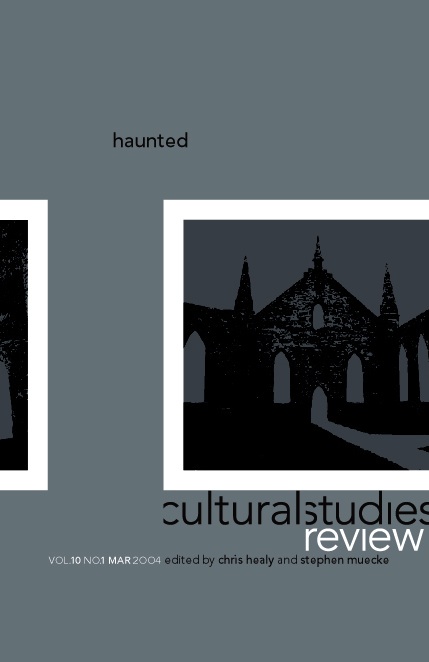Notes on a Genre to Come: Screenwriting and the 'Thesis-film'
Main Article Content
Abstract
Article Details
Section
Authors who publish with this journal agree to the following terms:
a) Authors retain copyright and grant the journal right of first publication with the work simultaneously licensed undera Creative Commons Attribution License that allows others to share and adapt the work with an acknowledgement of the work's authorship and initial publication in this journal.
b) Authors are able to enter into separate, additional contractual arrangements for the non-exclusive distribution of the journal's published version of the work (e.g., post it to an institutional repository or publish it in a book), with an acknowledgement of its initial publication in this journal.
c) Authors are permitted and encouraged to post their work online (e.g., in institutional repositories or on their website) prior to and during the submission process, as it can lead to productive exchanges, as well as earlier and greater citation of published work (See The Open Access Citation Advantage Service). Where authors include such a work in an institutional repository or on their website (ie. a copy of a work which has been published in a UTS ePRESS journal, or a pre-print or post-print version of that work), we request that they include a statement that acknowledges the UTS ePRESS publication including the name of the journal, the volume number and a web-link to the journal item.
d) Authors should be aware that the Creative Commons Attribution (CC-BY) License permits readers to share (copy and redistribute the work in any medium or format) and adapt (remix, transform, and build upon the work) for any purpose, even commercially, provided they also give appropriate credit to the work, provide a link to the license, and indicate if changes were made. They may do these things in any reasonable manner, but not in any way that suggests you or your publisher endorses their use.
References
ARONSON, L. 2000. Scriptwriting Updated: New and Conventional Ways of Writing for the Screen, North Ryde, Allen & Unwin, St Leonards/ Australian Film Television and Radio School.
ASTRUC, A. 1968. The Birth of a New Avant-Garde: La Caméra Stylo. In: GRAHAM, P. (ed.) The New Wave. London: Secker and Warburg/BFI.
BAZIN, A. 1971. What is Cinema, Vol. 2, Berkeley, Trans. H. Gray, University of California Press.
BORDWELL, D. & THOMPSON, K. 1986. Film Art: An Introduction, New York, Alfred A. Knopf.
BRECHT, B. 1978. Brecht on Theatre, New York, Trans. J. Willett, Hill and Wang.
CLOVER, C. J. 1992. Men, Women and Chainsaws: Gender in the Modern Horror Film, Princeton, New Jersey, Princeton University Press.
DANEY, S. 2000. Theorize/Terrorize (Godardian Pedagogy). In: WILSON, D. (ed.) Cahiers du Cinéma, Volume Four 1973–1978: History, Ideology, Cultural Struggle. London: Routledge.
EISENSTEIN, S. 1988. The Montage of Film Attractions. In: TAYLOR, R. (ed.) Eisenstein: Writings 1922–1923. London/Bloomington: BFI/Indiana.
GAUDREAULT, A. 2000. Film, Narrative, Narration: The Cinema of the Lumière Brothers. In: ELSAESSER, T. (ed.) Early Cinema: Space, Frame, Narrative. London: BFI.
KING, N. 1993. That was Then, This is Now”: An Interview with Colin MacCabe, British Film Institute, 3 September 1992. Southern Review, 26, 159.
KING, N. 1993. What was Then, This is Now: Writing and Teaching in the 1990s. Continuum: The Australian Journal of Media and Culture, 7, 232-36.
KING, N. 1994. My Life Without Steve: Postmodernism, Ficto-Criticism, and the Paraliterary. Southern Review, 27, 261-75.
KOLB, D. 1994. Socrates in the Labyrinth. In: LANDOW, G. (ed.) Hyper/Text/Theory. Baltimore and London: The John Hopkins University Press.
LEAHY, G. & KING, N. 1994. I’d Thought for a Long Time that I’d Make an Experimental Film about Romantic Love: An Interview with Gillian Leahy about My Life Without Steve. Continuum : The Australian Journal of Media & Culture, 7, 238-53. doi: https://doi.org/10.1080/10304319409365613
MARTIN, A. 1997. Making a Bad Script Worse: The Curse of the Scriptwriting Manual. Australian Book Review [Online]. Available: http://home.vicnet.net.au/~abr/April99/mar/htm.
RE, J.-P. S. 1989. No Exit and Three Other Plays, New York, Vintage.
RUIZ, R. 1995. Poetics of Cinema, Paris, Dis Voir.
THOMPSON, K. 1999. Storytelling in the New Hollywood: Understanding Classical Narrative Technique, Cambridge, Harvard University Press.
THOMPSON, P. 1998. The Cinematic Essay. Available: http://www.chicagomediaworks.com/2instructworks/3editing_doc/docessay.doc.
